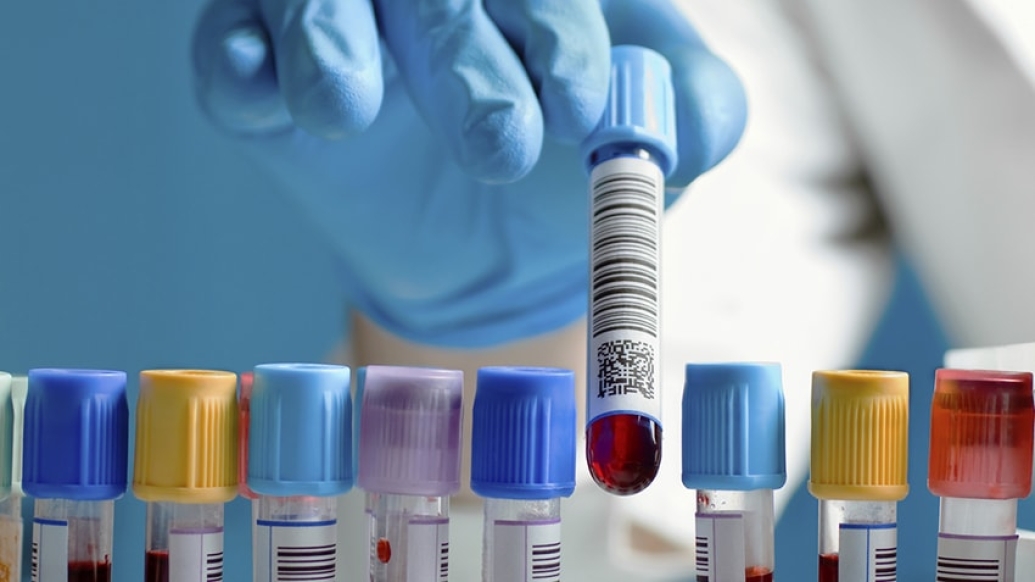Hundreds of thousands of hospital patients get a pricey genetic test. But it’s often unnecessary, a team of U-M clinicians says.
7:00 AM
Author |

At least a half-billion dollars is spent each year on blood tests for a genetic quirk that makes some people's blood more likely to form dangerous clots.
MORE FROM THE LAB: Sign up for our weekly newsletter
But most of that spending probably isn't necessary, according to researchers at the University of Michigan Medical School.
Writing in the Journal of Hospital Medicine, they review the state of testing hospital patients for a trait called inherited thrombophilia — and, given their findings, call for a drastic cut in use of the test by doctors nationwide.
"More testing is not always better," says Christopher Petrilli, M.D., an assistant professor of internal medicine at U-M and co-first author of the new paper, which is part of the Journal's ongoing series called "Choosing Wisely: Things We Do for No Reason."
After all, he and his colleagues write, people who have already had such dangerous clots, called venous thromboembolisms or VTEs, don't need a positive genetic test to justify taking medication and making other changes to prevent future clots.
And there's no evidence that medication intended to prevent clots will help people who haven't yet had a VTE. Testing a hospital patient's DNA for inherited thrombophilia, then, won't change that.
Still, the U-M analysis of medical records found, such testing occurs hundreds of thousands of times a year in Medicare patients alone.
Often, it appears, the test gets ordered to satisfy curiosity about why a patient had a VTE in order to see if the patient is among the 7 percent of Americans with a genetic mutation that makes blood more prone to clot.
Patients often get the test as part of multiple screenings that comprise what is known as a "hypercoagulable workup." But if doctors already are following guidelines grounded in evidence, the test result should rarely change a patient's care.
With the exception of very specific cases where such clots are highly likely — such as women with a family history of clots who are pregnant or getting hormone replacement therapy — there isn't much reason to do the test at all.
Physicians and patients should resist the temptation to perform a costly search for an underlying genetic cause of venous thrombosis.Lauren Heidemann, M.D.
Resisting temptation
Reasons to abstain extend beyond cost savings.
"Testing for this disorder is almost never beneficial and, in fact, can even be harmful because it can cause undue psychological distress for the patient, and unnecessary expense for the health care system," says Petrilli.
SEE ALSO: The Risks of Over-Imaging and Testing
It will take work, though, to shift that mindset.
"Physicians and patients should resist the temptation to perform a costly search for an underlying genetic cause of venous thrombosis," says co-first author Lauren Heidemann, M.D., also an assistant professor of medicine at U-M.
Which explains why Petrilli and Heidemann, along with the paper's senior author, Vineet Chopra, M.D., M.Sc., have set out to address such unnecessary testing at the University of Michigan Health System and beyond. All three clinicians are members of the U-M Institute for Healthcare Policy and Innovation.
To do this, they've co-founded a local chapter of the group Providers for Responsible Ordering, which aims to help physicians, nurse practitioners and physician assistants reduce overtesting and use health care resources appropriately.
They've also led the effort to make UMHS one of more than 40 founding members of the High Value Practice Academic Research Alliance, which is working to bring institutions together to help one another implement strategies that make better use of resources.
The current climate of public attention on new genetic testing options and personalized medicine, the authors note, could make this objective difficult.
Ideally, they say, tests to find out whether someone carries a certain genetic trait should only be ordered when there is clear information about the risks, benefits and costs of that test.
Reviewing the evidence
For the paper, Petrilli, Heidemann and their colleagues reviewed the full scope of literature and established guidelines on inherited thrombophilia testing. They illustrated the situation by applying this information to a hypothetical case of a young patient with a VTE but no family history who suffers a pulmonary embolism — a dangerous health emergency where clots form in the lower extremities and travel to the lungs, potentially cutting off oxygen to the body unless treatment starts quickly.
Conclusions about VTE prevention and treatment, they note, have been reached by several medical bodies — including an American College of Chest Physicians guideline recommending against clot-prevention medication for people with the genetic trait but no VTE history.
And a group that looks at genetic testing, the Evaluation of Genomic Applications in Practice and Prevention Working Group, concluded that tests for inherited thrombophilia were likely not cost-effective.
All of this helps support the authors' argument.
Says Heidemann: "With national health care spending reaching an unsustainable level, we as physicians need to be vigilant about becoming stewards of health care resources."

Explore a variety of healthcare news & stories by visiting the Health Lab home page for more articles.

Department of Communication at Michigan Medicine
Want top health & research news weekly? Sign up for Health Lab’s newsletters today!





